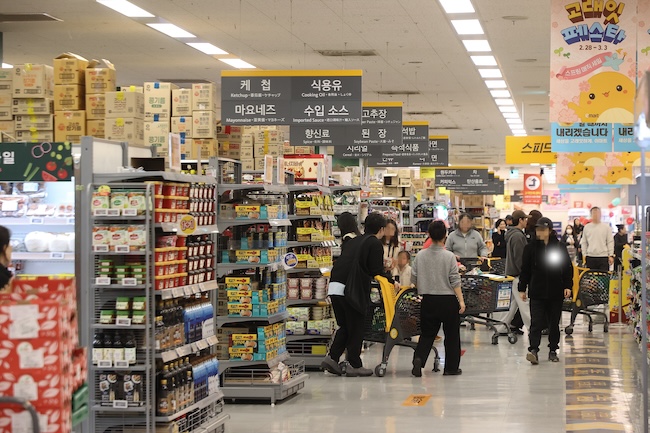
The financial burden of food expenses for South Korea’s lowest-income households has skyrocketed over the past five years. (Image courtesy of Yonhap)
SEOUL, March 3 (Korea Bizwire) — The financial burden of food expenses for South Korea’s lowest-income households has skyrocketed over the past five years, growing at a significantly faster rate than for higher-income groups. New data reveals that the bottom 20% of earners saw their monthly food expenditures rise by nearly 40%, far outpacing the national average.
According to Statistics Korea, low-income households spent an average of 434,000 won ($297) per month on food in 2024, up from 313,000 won ($214) in 2019. This represents a 38.6% increase, compared to an overall rise of 26.3% for all households.
In contrast, middle- and higher-income households saw food costs increase at a slower pace, with the second income quintile experiencing a 25.3% rise, the third 22.1%, and the wealthiest 20% seeing a 27.1% increase.
The sharp rise in food costs has been driven by multiple factors, including supply chain disruptions, geopolitical tensions affecting global grain prices, and the phenomenon known as ‘greedflation’—where companies inflate prices beyond actual cost increases.
South Korea’s food price index surged by 28.3% between 2019 and 2024, significantly outpacing the overall consumer price index, which rose by 14.8% during the same period.
Dining out costs have also risen sharply, with the restaurant price index increasing by 22% over the past five years. Among the top 10 consumer goods with the highest price hikes in 2024, nine were food-related.
The disproportionate impact on low-income households is particularly concerning given that food expenses make up a far greater share of their disposable income. In the fourth quarter of 2024, the bottom 20% of earners had an average monthly disposable income of 1.04 million won ($712), with food costs consuming 45% of that total.
By comparison, food accounted for 25.5% of spending among second-quintile earners and less than 15% for the wealthiest 20%.
With food prices continuing to climb in early 2025 due to a weak exchange rate and ongoing trade tensions between the U.S. and China, analysts warn that lower-income households will face even greater financial strain in the months ahead.
Ashley Song (ashley@koreabizwire.com)






